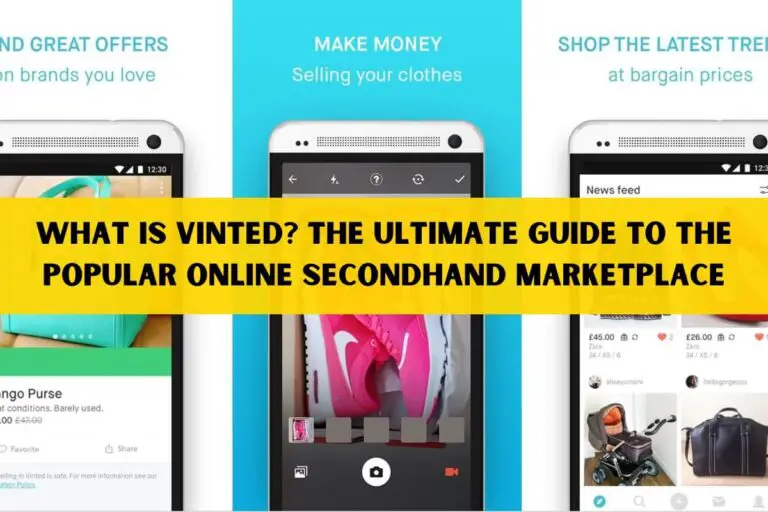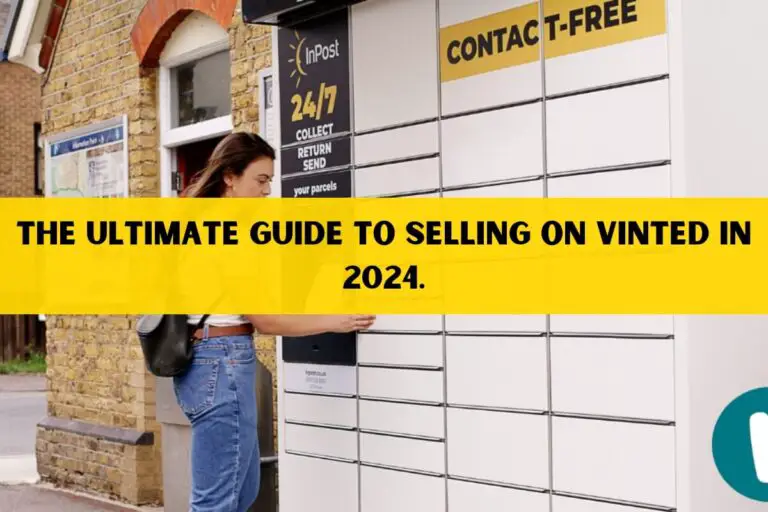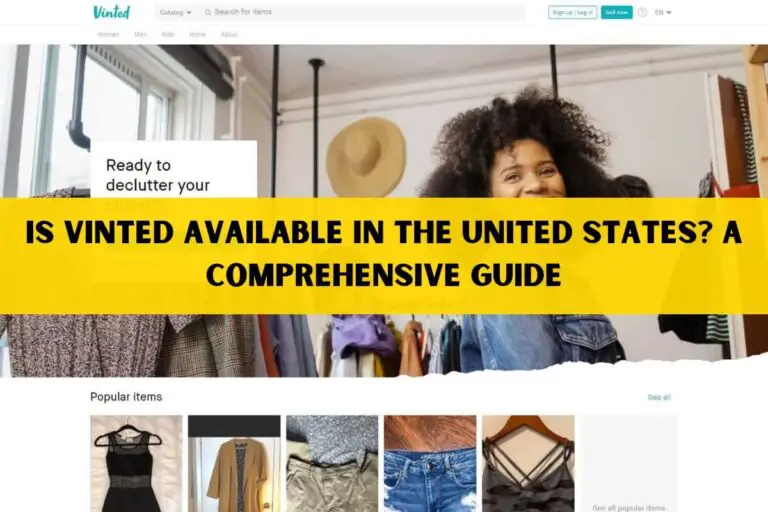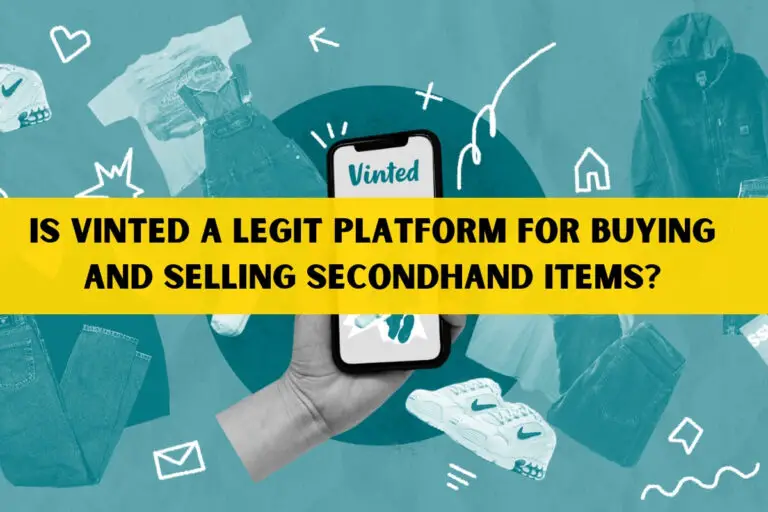How Does Vinted Make Money? A Comprehensive Guide
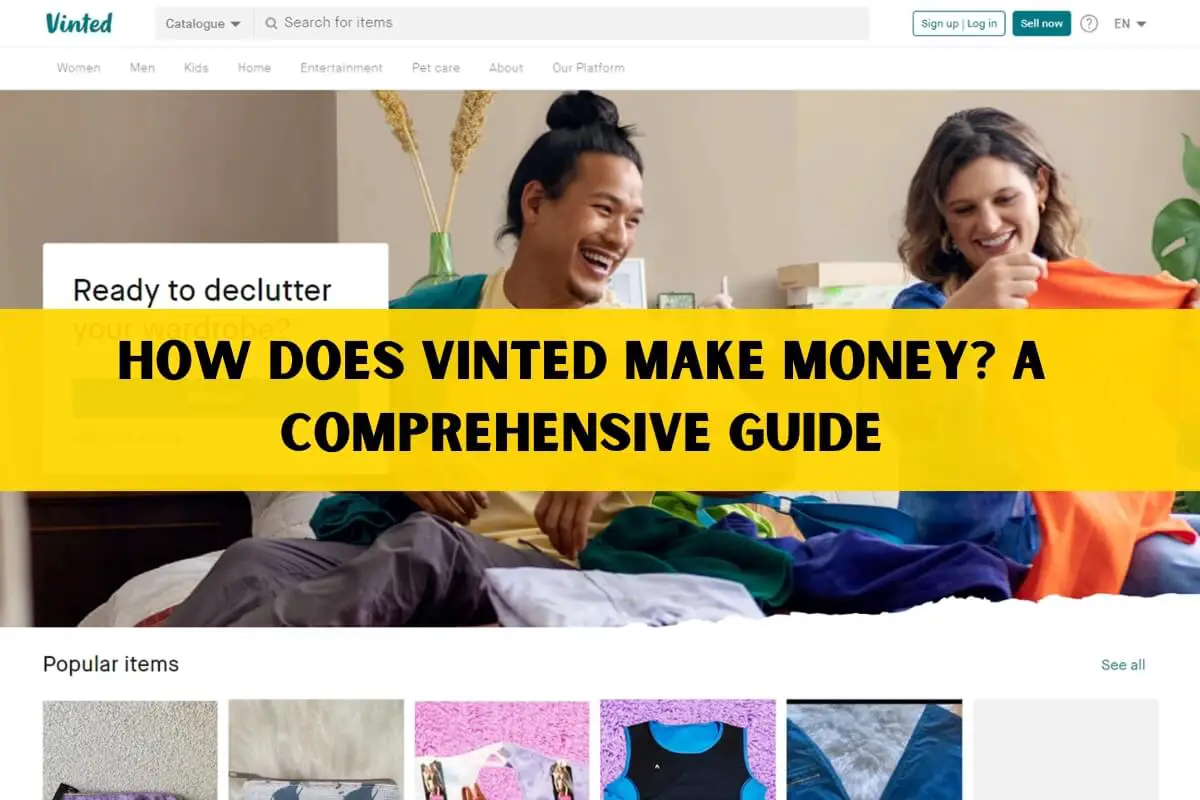
Vinted, an online marketplace, has made its mark by offering sustainable and affordable fashion choices. Its mission is to prolong the lifespan of clothing through a circular economy model. This approach aligns with conscious consumers’ growing demand for eco-friendly and budget-friendly options.
But how does this platform generate revenue while offering a free-to-sell platform for users?
In short, Vinted primarily makes money through buyer fees, shipping costs, and additional services that enhance seller visibility and product promotion.
This overview explains Vinted’s business model, revenue sources, sustainability focus, and position in the second-hand clothing market compared to competitors. It covers Vinted’s global reach and journey since its launch.
What is Vinted?
Vinted is an online marketplace that allows users to buy, sell, and swap pre-owned clothing and accessories. Founded in 2008 in Lithuania, the platform has grown exponentially, now boasting a global presence in over 21 countries and a user base of 45 million fashion enthusiasts.
At its core, Vinted’s mission is to make second-hand fashion the first choice for shoppers worldwide. By encouraging the reuse and recycling of clothing, the platform aims to reduce the environmental impact of the fashion industry and promote a more sustainable way of shopping. Next, I will dive into Vinted’s primary revenue streams, explaining each in detail with clear headings.
Vinted’s Revenue Streams
While selling on Vinted is free for users, the platform has adopted innovative strategies to generate revenue, primarily through buyer fees and additional services. Let’s explore each of these in detail:
Buyer Protection/Service Fee
At the heart of Vinted’s revenue model lies the buyer protection fee, a mandatory charge that ensures secure transactions and a hassle-free shopping experience. This fee consists of two components:
- A variable fee: Calculated as a percentage of the item’s price, typically ranging from 3% to 8%.
- A fixed fee: A flat fee ranging from $0.30 to $0.80, depending on the transaction.
The buyer protection fee covers essential services offered by Vinted, including:
- Purchase Protection: Buyers are eligible for a refund if an item arrives damaged, differs significantly from the product description, or fails to arrive at all. This protection kicks in when the buyer reports the issue within two days of the item being marked as delivered.
- Fraud Protection: Vinted implements robust security measures to prevent unauthorized access to buyer accounts and ensure the integrity of transactions.
- Customer Support: Vinted’s dedicated customer support team is available to assist buyers with any disputes, queries, or concerns throughout the purchasing process.
Vinted charges a fee to create a trusted and secure environment for buyers, making shopping on the platform better.
Shipping Costs
In addition to the buyer protection fee, Vinted transfers the burden of shipping costs to the buyers. The shipping charges vary depending on factors such as package size, weight, and the chosen delivery method.
While Vinted likely negotiates bulk shipping rates with carriers, enabling potential cost savings, the platform primarily aims to pass on the shipping expenses directly to the buyers. However, some exceptions may apply, such as free shipping for a buyer’s first purchase or a seller’s first sale, as part of promotional offers or incentives. I will now discuss Vinted’s additional revenue sources, including optional services for sellers.
Additional Revenue Sources
Beyond the buyer protection fee and shipping costs, Vinted has introduced several optional services that cater to sellers’ needs, generating additional revenue streams for the platform.
Wardrobe Spotlight (UK)
Exclusive to the United Kingdom market, Vinted’s Wardrobe Spotlight service offers sellers an opportunity to boost the visibility of their listed items. For a fee of £6.95, sellers can have their items prominently displayed in the news feeds of other users for a full week.
Notably, the Wardrobe Spotlight feature leverages user preferences and body sizes to ensure targeted exposure. This means that sellers’ items are showcased to users who are likely to be interested in similar styles and sizes, increasing the chances of successful sales.
To be eligible for the Wardrobe Spotlight service, sellers must have at least five items listed for sale during the seven-day promotion period.
Bumping Listed Items
Another revenue stream for Vinted comes from the “bumping” service, which allows sellers to promote their listings to a wider audience. By paying a fee, sellers can ensure that their items appear more prominently in other users’ news feeds and search results.
The cost of bumping an item varies depending on factors such as the item’s category, price, and the total number of items currently being bumped on the platform. Sellers can choose to bump their items for either three or seven days, with the promotion ending once the item is sold.
This service is particularly beneficial for sellers offering high-demand or premium items, as it increases the visibility and exposure of their listings to potential buyers.
Third-Party Advertising
As a platform with a substantial user base, Vinted presents an attractive opportunity for third-party advertisers seeking to reach a targeted audience. To capitalize on this, Vinted offers a self-service advertising platform where businesses can create and manage ad campaigns.
While the pricing and revenue-sharing models are not publicly disclosed, Vinted likely generates revenue through advertising fees based on factors such as impressions, clicks, or conversions. By leveraging its user data and preferences, Vinted can facilitate targeted advertising, making it an appealing platform for brands and businesses in the fashion and lifestyle sectors. Now I will address the question of how Vinted makes money for sellers in a featured snippet format.
Featured Snippet: How Does Vinted Make Money for Sellers?
Vinted’s business model is unique in that it does not charge sellers any listing or commission fees. Instead, sellers can list and sell their items on the platform for free. However, Vinted offers optional paid services that can help sellers increase their visibility and sales:
- Wardrobe Spotlight (UK only): Sellers can pay £6.95 to have their items prominently displayed in other users’ news feeds for a week, reaching potential buyers with similar preferences.
- Bumping Listed Items: By paying a fee, sellers can ensure their items appear more frequently in search results and news feeds, increasing visibility and potential sales.
Vinted makes money from sellers who pay for extra services to increase their sales and visibility on the platform.
Vinted’s Business Model Evolution
Vinted’s journey has been marked by continuous adaptation and innovation, reflecting the ever-changing landscape of the fashion industry and consumer preferences.
Initially, Vinted’s revenue model relied on charging sellers a commission on every successful transaction. However, as the platform gained traction and the second-hand fashion market evolved, Vinted recognized the need to shift its focus towards a more buyer-centric approach.
By eliminating seller fees and introducing the buyer protection fee, Vinted not only fostered a more seller-friendly environment but also prioritized building trust and confidence among buyers. This strategic move aligned with the platform’s mission of promoting sustainable fashion and encouraging conscious consumption.
As consumer demand for sustainable and affordable fashion options continues to rise, Vinted has remained agile, adapting its business model to meet these changing needs. The introduction of additional services like Wardrobe Spotlight and bumping listed items reflects the platform’s commitment to supporting both buyers and sellers in their pursuit of a more circular fashion economy.
Looking ahead, Vinted’s future may hold even more innovative revenue streams and expansion plans as the company continues to navigate the dynamic landscape of e-commerce and sustainable fashion.
The Sustainability Factor
Vinted’s commitment to sustainability is deeply woven into its business model and ethos. By promoting the reuse and recycling of clothing, the platform plays a crucial role in extending the life cycle of fashion items and reducing the environmental impact of the industry.
According to the United Nations Environment Programme, the fashion industry is responsible for 10% of global greenhouse gas emissions and 20% of wastewater production. Alarmingly, it is estimated that over 85% of textiles end up in landfills or incinerators each year.
In contrast, the circular economy approach championed by platforms like Vinted can significantly mitigate the environmental impact of the fashion industry. By encouraging the reuse and recycling of clothing, second-hand marketplaces contribute to reducing waste, conserving resources, and minimizing the carbon footprint associated with textile production.
Moreover, Vinted’s focus on sustainability resonates with an increasingly conscious consumer base. A survey by the Boston Consulting Group revealed that 70% of consumers consider sustainability when making purchases, and nearly 60% are willing to pay a premium for sustainable products.
Vinted promotes sustainability and meets the demand for eco-friendly fashion by providing an accessible platform for second-hand shopping.
Featured Snippet: What are the Benefits of Buying on Vinted?
Buying on Vinted offers several benefits to conscious consumers:
- Affordability: Access to pre-owned fashion items at discounted prices.
- Unique Finds: Discover rare, vintage, or out-of-production clothing and accessories.
- Sustainability: Reduce environmental impact by extending the life cycle of fashion items.
- Secure Transactions: Enjoy buyer protection, fraud prevention, and customer support services.
- Community Experience: Connect with like-minded individuals and participate in a vibrant fashion community.
Shopping on Vinted lets users satisfy their fashion desires while supporting a sustainable and circular economy.
Tips for Selling on Vinted
For sellers looking to maximize their success on Vinted, several best practices can enhance their visibility and sales:
- High-Quality Listings: Invest time in creating detailed and accurate product descriptions, including measurements, conditions, and any notable features. Accompany listings with clear, well-lit photographs that showcase the items from multiple angles.
- Competitive Pricing: Research similar items on the platform and price your listings competitively, taking into account factors such as condition, brand, and demand.
- Strategic Promotion: Utilize Vinted’s optional services, like Wardrobe Spotlight and bumping, to increase the visibility of your listings among potential buyers.
- Responsive Communication: Respond promptly to buyer inquiries and maintain open lines of communication throughout the transaction process.
- Positive Reviews: Encourage satisfied buyers to leave positive reviews, as these can significantly impact your credibility and future sales on the platform.
Sellers can boost their success on Vinted by following these tips, attracting loyal customers, and increasing their earnings.
Vinted vs. Competitors
While Vinted has established itself as a prominent player in the second-hand fashion market, it faces competition from other online marketplaces with similar offerings. Let’s take a look at how Vinted compares to some of its competitors:
Depop
Depop is a peer-to-peer social shopping platform that shares similarities with Vinted but caters more to a younger, trend-conscious audience. Unlike Vinted, Depop charges sellers a 10% commission on each sale, in addition to transaction fees. However, Depop’s social media-inspired interface and focus on vintage and unique fashion items have made it a popular choice among Gen Z and millennial shoppers.
Poshmark
Poshmark is another social commerce platform that combines e-commerce with social media elements. While Poshmark’s business model also involves charging sellers a commission (20% for sales over $15), it offers unique features like virtual “Posh Parties” that allow users to connect and shop based on specific themes or brands.
ThredUp
ThredUp operates differently from Vinted by maintaining its inventory of second-hand clothing. Sellers send their items to ThredUp, which then selects, photographs, and lists the items on its platform. ThredUp charges sellers a commission ranging from 5% to 80%, depending on the sale price.
Vinted stands out in the second-hand fashion market due to its focus on sustainability, buyer-centric model, and global reach.
Conclusion
In the ever-evolving landscape of e-commerce and sustainable fashion, Vinted has carved a niche for itself by offering an innovative and eco-friendly approach to buying and selling pre-owned clothing and accessories. Through its buyer-centric revenue model, which includes mandatory buyer protection fees, shipping costs, and optional seller services like Wardrobe Spotlight and bumping listed items, Vinted has successfully generated revenue while fostering a trusted and secure environment for its users.
Vinted’s journey has been marked by continuous adaptation, reflecting its ability to navigate changing market trends and consumer preferences. From its humble beginnings as a platform for trading clothing among friends to its current status as a global second-hand fashion marketplace, Vinted’s commitment to sustainability and affordability has been unwavering.
By promoting the reuse and recycling of fashion items, Vinted not only contributes to a more circular economy but also caters to the growing demand for eco-friendly and socially responsible fashion choices. As consumers become increasingly conscious of their environmental impact, platforms like Vinted will play a crucial role in shaping a more sustainable future for the fashion industry.
Looking ahead, Vinted’s future may hold even more innovative revenue streams and expansion plans, further solidifying its position as a leader in the second-hand fashion market. Whether you’re a seller seeking to declutter your wardrobe or a buyer in search of unique and affordable fashion finds, Vinted offers a platform that seamlessly blends style, sustainability, and accessibility.

